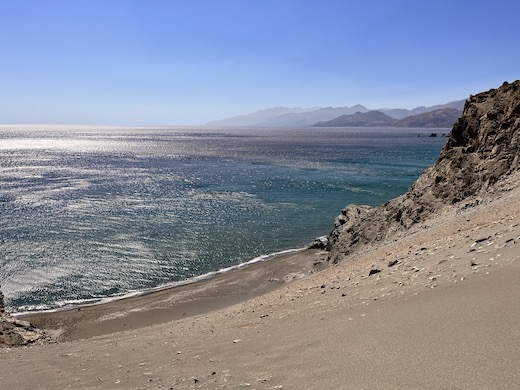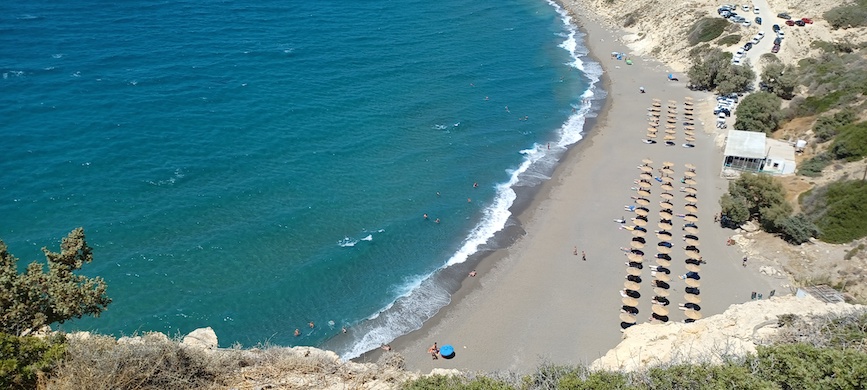So Much To Know About Crete, and Yet …
One has the feeling that the longer you stay, the less the Greek island wants you to know. That is not at all the same thing as unfriendly.

ATHENS — If Greek islands were movie stars, Crete would have to be Garbo: seductive, timeless, but also stubborn and, in the end, inscrutable. Is that deliberate, or just a product of geography and circumstance?
Certainly, Crete has a lock on elements of Western progress — Europe’s first major civilization, the Minoans, thrived here. Its nickname in Greek is Megalonisos, or the big island, and how fitting that is, because it is one of the Mediterranean’s largest, 162 miles end to end. No charming pebble like many another, it is rather like a colossal collection of city-sized boulders flung into the sea from on high, possibly by the master of sky and thunder, Zeus.
The most powerful god in the ancient Greek pantheon was by all reliable accounts born in a cave in the middle of Crete. Add that myth to the better-known one about King Minos and the Minotaur, plus centuries of rule by Venetians, Turks, and others, and you have a place infused with singular historical heft.
Its strategic value was recognized early on; commercial ties with Egypt in antiquity were followed by the Romans’ decision to pair up the island not with what is now mainland Greece but with Cyrenaica, the northeastern coast of Libya. It is along the long and lonely south coast of Crete, facing the Libyan Sea, that the true face of the island comes to the fore.

The north coast is where we find the three major cities of Crete: Chania, Rethymnon, and Heraklion, the capital. Each was fortified by the Venetians during their not completely unenlightened rule of Crete, which lasted from 1212 until 1669; one look at the thick ramparts that still encircle Heraklion’s vibrant old town is enough to see how they managed to hold onto it for so long.
It is worth braving the summer heat and tourist hordes this time of year to explore these cities and their myriad architectural and cultural treasures. The perennial showstopper is the Heraklion Archaeological Museum, which houses the world’s largest repository of ancient Minoan art and artifacts. Heraklion itself is one of Europe’s great unsung cities, and such is the extent of its praises that they must be sung separately.
It is a common tourist circuit, and also a mistake, to make a quick pass through Heraklion en route to the Minoan palace ruins of Knossos. Archaeologically significant but aesthetically underwhelming, the site is generally overrun with tourists and all the famous antiquities found there are now in Heraklion’s museum. While Minoan civilization remains enigmatic, Crete is in fact littered with Minoan ruins.
If it is a mix of mystery and the truly monumental that you seek, you need to venture deeper into the island. The Minoan palace ruins of Phaistos are 34 miles south of Heraklion, and worth the schlep. Most of the site dates from around 1700 B.C., but remnants such as two sets of oversized staircases really do convey a sense of the palatial.
Never far away, of course, is the sea. This swath of South Crete is an odd confluence of cultures and vibes, in the aggregate like nothing to be found in any other Mediterranean island with the possible exception of Ibiza, which also blends the very ancient with the ostensive charms of our millennium. The seaside hamlet of Matala was renowned as a hippie hangout in the late 1960s and early 1970s, and it is not hard to see why. There is only one narrow road into the town, which mostly clings to a hillside opposite a cliff hollowed out in spots by small man-made caves. Between those and the inhabited part is a wide curl of beach.
Matala is not the kind of place I would recommend to stay unless you belong to a youngish demographic and are with a group of fellow revelers. It is, however, worth a stop for a gourmet but agreeably lazy lunch or dinner at Scala, a bright and breezy taverna perched so close to the sea it feels more like dining on a yacht. The fish soup comes with fresh shellfish and seafood, fennel olive oil, and lime pearls, the linguine is accentuated with roe of sea urchin, golden herring, and sturgeon, and the grilled sea bass might be the best you will ever taste. In a nod to the counter-culturists who put Matala on the map, a dessert called Scala Illusion features vanilla ice cream with aged caramelized balsamic vinegar, spicy feuilletine, and cannabis-flavored olive oil.
Between Matala and the farm market town of Tymbaki, which ships out watermelons and more to mainland Greece and, from there, the world, there is a very long beach called Komos that on one spot includes seaside ruins said to be part of the port of ancient Phaistos. The bay opposite is that of Messara, so wide in scale that it is reminiscent of the kind of geography you would expect in some desolate South American or African location, not Europe. Here is where, on any given morning, the silence could be punctuated by the rumble of F-16 jets, which run practice maneuvers from their base at Souda Bay, the naval base of the Hellenic Navy and NATO on the island’s north coast.

The trade-off of enjoying the rustic charms and sundry historical sights of southern Crete is that fine places to stay are literally few and sometimes very far between. There are private villas one can rent, but they tend to be quite expensive and are typically better suited to longer stays. The best resort going is one that has everything a discerning traveler might want, yet retains the feel of a boutique hotel known only to a few. It is called Paralos Irini Mare, situated in another seaside village, Agia Galini.
This is a family-run resort in a truly idyllic location that is nevertheless well-positioned for excursions along the south coast in either direction. I have not stayed there for a few years, but when I did my modern room came with its own plunge pool — a nice touch for those hot and humid Cretan summer days. Crete is renowned for its food, and most of what is on offer here is supplied locally: from the tomatoes and pomegranates to the eggs, milk, and more. Olive oil from Irini Mare’s own orchards is fantastic. Most guests stay on a European-style plan, which means a vast breakfast buffet as well as dinner are included.
Those who are not aficionados of hotel buffets should break the rule. Although one day I passed by and ordered a couple items à la carte, it reminded me of the marvels the Irini Mare kitchen turns out on a daily basis. The Irini Mare salad featured goat cheese, dried figs, honey dressing, and bits of pasteli, or honeyed sesame crisps, and a generous piece of sea bass was oven-baked with roasted candied lemon slices and caraway seeds that triggered Proustian emotions I cannot explain.

Also, I still cannot explain Crete. One has the feeling that the longer you stay, the less the island wants you to know. That is not at all the same thing as unfriendly. I think of the shopkeeper who sold me the sweetest watermelon three days in a row, and refused to let me pay for it on the fourth. To linger longer, I checked into a great new place, called Stella Luxury Apartments, also in Agia Galini. I drank up the sea view and ate omelets I whipped up myself, with Cretan graviera cheese and mountain herbs. I watched fighter jets dash high above the bay as I sipped my locally sourced banana cola.
One morning on a whim I drove westward to an impossibly steep and impressively lonely beach with fine silvery sand called Agios Pavlos, or St. Paul. This is what a beach on the moon might look like, if there was water on the moon. And what if there is? Stay a while in this realm of bewitching beaches, haunted Venetian fortresses, and jagged mountain peaks where patches of snow glisten well into July, and see if your mind does not travel to some strange and distant places marked only on maps unknown.

